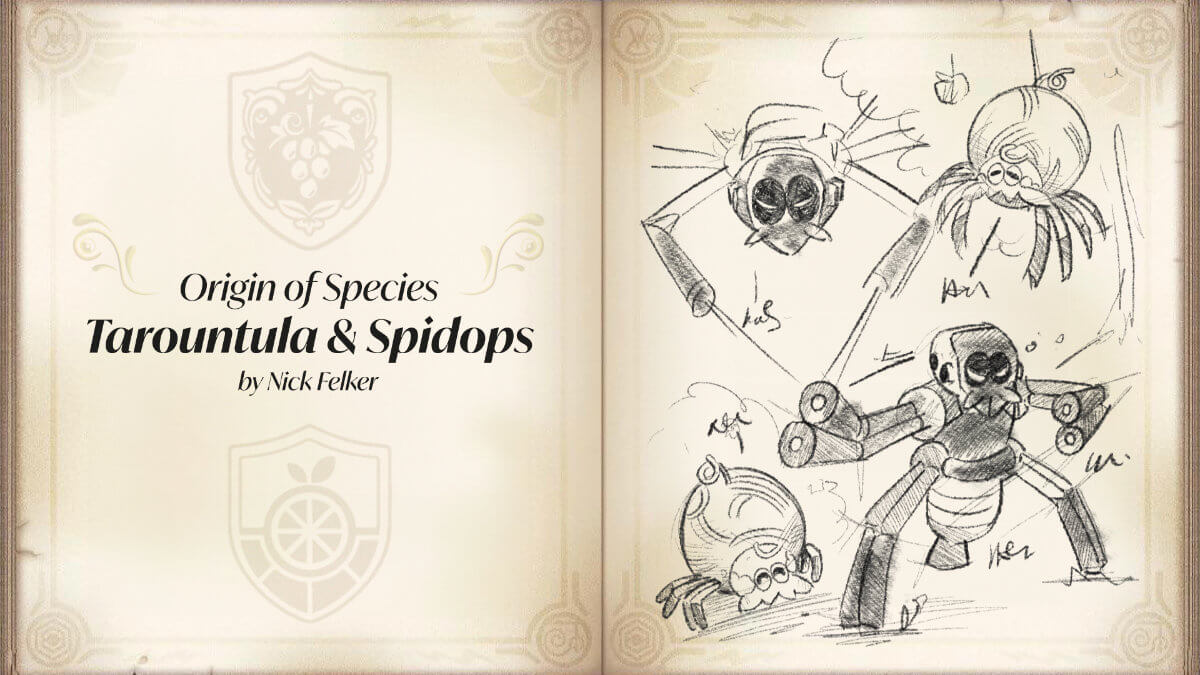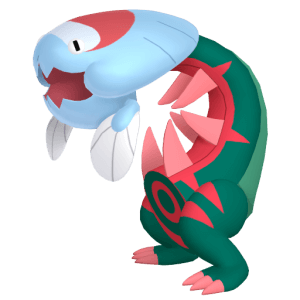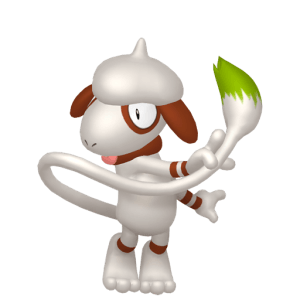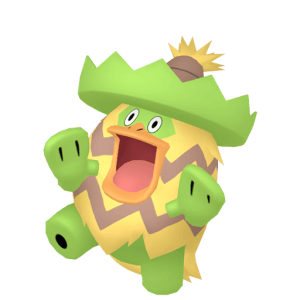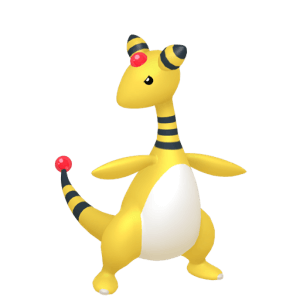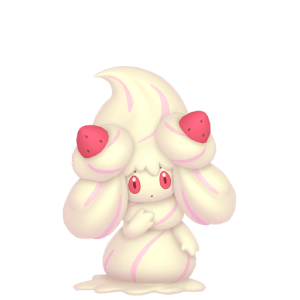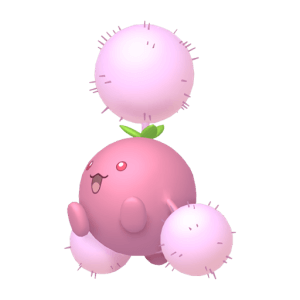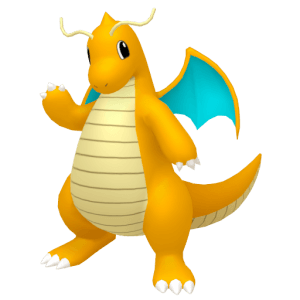In this recurring series, I’ll analyze the origins of Pokémon designs and their allusions to Mediterranean culture from Pokémon Scarlet and Pokémon Violet.
Tarountula
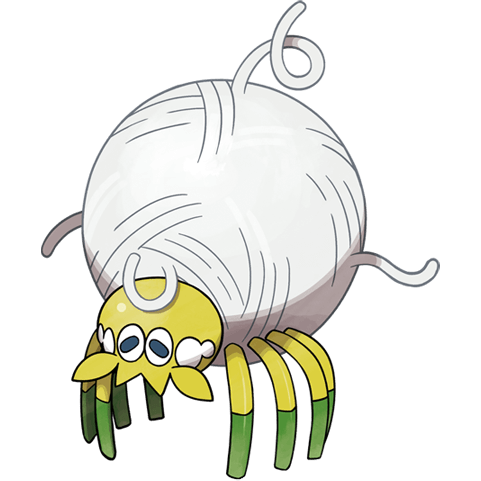
Players will first encounter this Bug-type Pokémon watching you from trees, quickly falling to the ground if the tree is struck. Sometimes they will dangle from branches using the silk created by its body. This silk is wrapped around its body like thread around a spool, and a ball of silk sits on top of its eight legs. Although we have had several Pokémon with spider designs, Tarountula is the first to have eight legs.
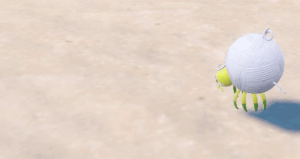
It can shoot that ball of silk at opponents as a weapon and retract it over its abdomen.
Tarountula is a combination of “Tarantula” and “Round”, although its not a tarantula. Its design is based on an orb-weaver spider, of the genus Araneidae rather than Theraphosidae. Orb-weaver spiders are common and found all around the world. They’re known for spinning webs using the silk from their bodies every evening, capturing insects, then doing so the next day. They consume the old webs the next day, then get to work again.
The ball of threads wrapped around its body is elastic enough to deflect the scythes of Scyther, this Pokémon’s natural enemy.
The thread it secretes from its rear is as strong as wire. The secret behind the thread’s strength is the topic of ongoing research.
Pokédex
Spider silk is an active area of scientific research. One academic paper from 2008 describe the silk as strong as steel and as flexible as rubber. Scientific interest has grown over time, with many scientists seeking to understand why it has these properties and whether they can be reproduced artificially. If possible, they could have many applications.
Spidops
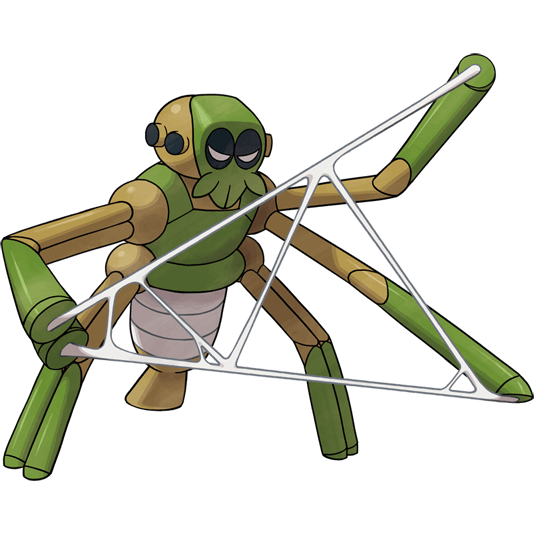
Tarountula evolves into Spidops. Its round body becomes sharper and squarer while developing the ability to produce webbing out of its legs. Its name is a combination of “Spider” and “Ops”, a shorter version of “operations”.
Spidops takes some design inspiration from assassins and espionage. Its large eyes make it look like its wearing night-vision goggles. In Paldea, it will follow trainers around quietly, producing webbing which it will use in its attack.
It clings to branches and ceilings using its threads and moves without a sound. It takes out its prey before the prey even notices it.
Spidops covers its territory in tough, sticky threads to set up traps for intruders.
Pokédex
Biologically, it appears to take inspiration from ogre-faced spiders, a group of spiders that weave nets to catch prey. They will hold their web in the front two pairs of legs and then drop the web upon unsuspecting bugs. They also have a membrane in their eyes similar to a tapetum lucidum which reforms each night and allows them to process much more light. The effect is biologically similar to night-vision goggles.
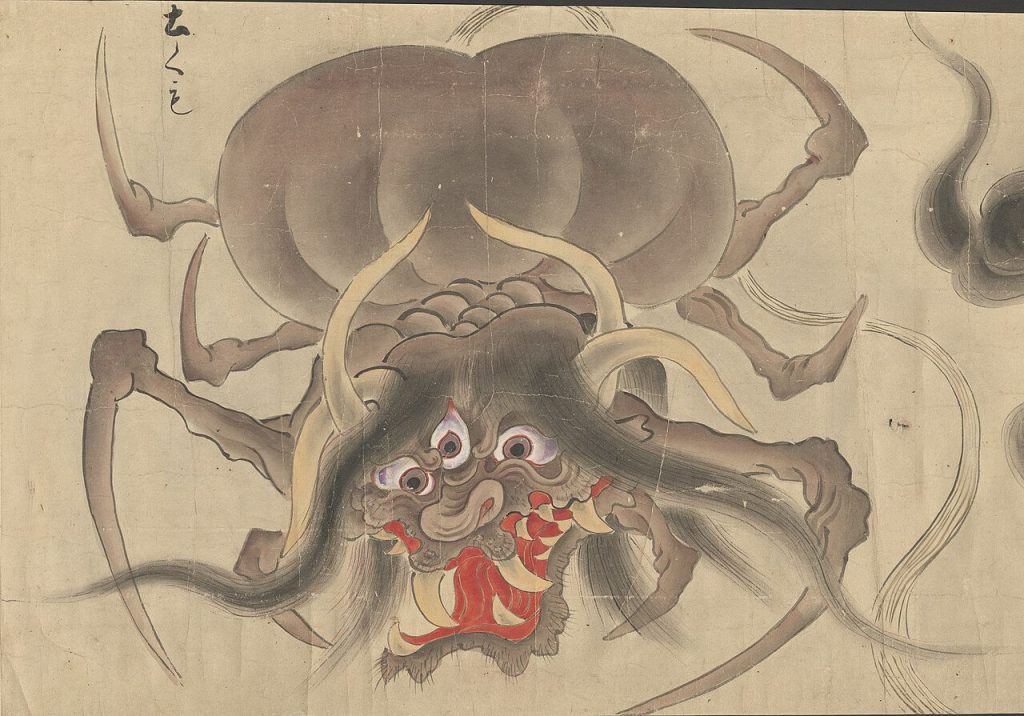
An ogre-faced spider is also the name of the mythical yokai Tsuchigumo, which was large enough that its web traps caught travelers.
The behavior of Spidops using its webbing to trap its opponents is embodied in its signature move Silk Trap. It protects the user and punishes opponents using contact moves by reducing their speed by one stage.
Conclusion
Tarountula and Spidops take ample inspiration from spider biology and the inventiveness of silk to catch opponents and prey. Though they are not the first spider Pokemon, they definitely stand out for their sinister behavior and creepiness. Although many players may find Tarountula a good Pokemon to join them on their journey, my personal arachnophobia makes me reluctant to catch them all.
A note from PJ: If you want to learn more about the real-world spiders found in your house, I highly recommend Travis McEnery’s YouTube channel! He has lots of very informative videos about common spiders.
November Giveaway


